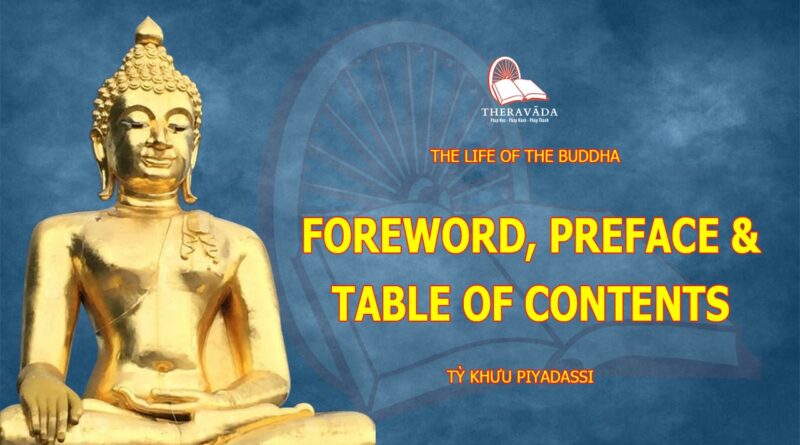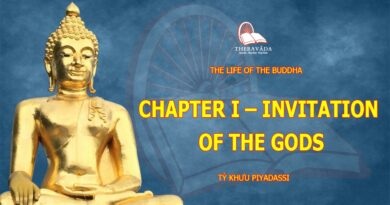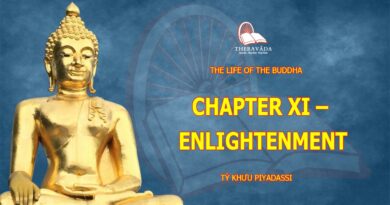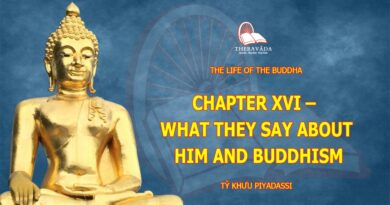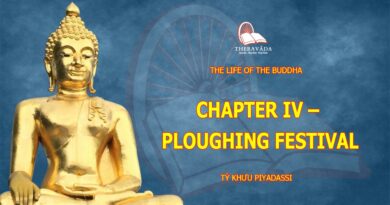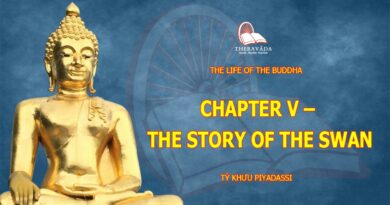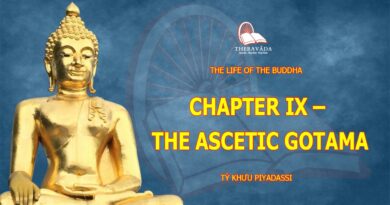THE LIFE OF THE BUDDHA: FOREWORD, PREFACE AND TABLE OF CONTENTS
TABLE OF CONTENTS
[01]. Invitation of the Gods
[02]. Queen Mahaa Maayaa’s dream
[03]. The birth of a Prince
[04]. Ploughing festival
[05]. The story of the swan
[06]. His marriage
[07]. The four signs
[08]. The Great Renunciation
[09]. The ascetic Gotama
[10]. Sujaataa’s wish
[11]. Enlightenment
[12]. The seven weeks after enlightenment
[13]. His first sermon
[14]. The teachings of the Buddha
[15]. The Parinibbaana of the Lord Buddha
[16]. What they say about Him and Buddhism
FOREWORD
“The gift of Truth excels all other gifts”
I was the first reader of the Life of the Buddha written by Mrs. Radhika Abeysekera. She presents the Dhamma to children in a very attractive way. On the day I was in Winnipeg, I understood the value of her voluntary gift of Dhamma (Dhammadana) to the children.
The results of her Dhammadana resolved my questions about the Dhamma knowledge and disciplined behaviour of the children of the Winnipeg Buddhist community.
To teach the life story of the Lord Buddha would not take much time in modern times. Let the children study it in detail later, when they understand the Dhamma better. Radhika presents in brief the points of the Dhamma that the beginner needs to know in more detail later.
Her attempt to attract children by giving them an idea of the correct path is more helpful than detailing the life story of the Lord Buddha. When children understand the facts of the teaching, they will eventually be persuaded to read for themselves the other necessary parts of the life story of the Lord Buddha.
The important points of the Dhamma which should be known by children are well expressed using few words in this book. When children ask more about the Lord Buddha, then their parents should draw them to know more. That is the easy way to teach Dhamma to children.
This is the beginning of her writing career. Let us hope she continues to write more books to reintroduce our children to Buddhism. We appreciate her silent mission in the Dhammadana that excels all other gifts. May all beings be well and happy!
Ven. Kurunegoda Piyatissa (Maha Thero)
New York Buddhist Vihara
Kew Gardens. New York. U.S.A.
November 11, 1991
Preface
When we first came to Winnipeg, Manitoba, there was no facility available to send our children to learn the teachings of the Buddha. In May of 1989, the Vietnamese community, which had just purchased a temple, very generously gave us permission to use their new temple. Due to the Dharma Daana of the Vietnamese community, for the first time in the history of Winnipeg, Manitoba, we were able to organise a Vesak celebration with Attangasila (observing the 8 precepts) and Bhakthi Gita (devotional songs) by the children. As part of the celebration I told the Sri Lankan children the story of Angulimala.
Both our children (ages 6 & 3 ) were fascinated by the story. Realising that they were ready for the teachings of the Buddha I started the Full Moon (Poya) Day Program. The Poya Day Program consisted of a Gilanpassa puja followed by a class for the children. As the other Sri Lankans in Winnipeg too could benefit by the program, it was open to all interested persons.
This book is the result of my Poya day classes. Our congregation grew from six children and a handful of adults to ten children and about fifteen adults. Now the children had acquired a fair knowledge of the teachings of the Buddha. However, they had no permanent record of what I taught them. I was afraid that as quick as they were to absorb the teachings of the Buddha, they would forget. In addition, our son, who is an avid reader, was asking me for more and more information about the teachings of the Buddha. Though I had many excellent books in both Sinhala and English, most of them were too advanced for him to read and understand on his own. This first book summarizes some of what I have taught in class. I intend to document the rest of what I have taught in subsequent books.
To benefit most from this book, a child should have some formal teaching of Buddhism. However, to make the book interesting to first-time readers, I have included all of the subjects that my class found most interesting. The brief description of the heavens and the life span in them resulted in many questions from the children, and led to the talk on the 31 planes of existence. It was also their questions that led to the class on rebirth, kamma and the advent of the Maithreya Buddha. It is hoped that the first-time readers too would be inspired to question, read and find out more about the teachings of the Buddha after reading this book.
Many people helped directly and indirectly in the production of this book. First, it is thanks to the Vietnamese community of the Chan Dao Buddhist Association that we Sri Lankans have a place to worship. May they all partake in the merits of this gift of Dhamma. I also would like to thank Venerable Piyatissa (Mahaa Thero) of the New York Buddhist Vihara for checking the book for the accuracy of its material and writing the foreword. The
Venerable Piyatissa has been a great help to us since we came to North America, and helped us to celebrate Vesak in Winnipeg in 1990.
I also want to thank Sarath, my husband, who helped to edit and publish this book, and our son, Chamal, who read the book many times to ensure that it can be read and understood by a child of eight.
This is the second edition of The Life of the Buddha. My good friend, Adrienne Bouchard Langlois, has offered her expertise in editing the contents of this second edition. It was also her inspiration that led to the use of technology in reproducing the pictures used in this book. Her encouragement and effort are a constant source of inspiration in my work. Her valuable contribution to this second edition is gratefully acknowledged.
May you all partake in the merit of this Dhamma Daana.
Radhika Abeysekera
Winnipeg, Manitoba. Canada
November 19, 1996
Second edition – November, 1996
First edition – November, 1991
Source: Budsas.net

